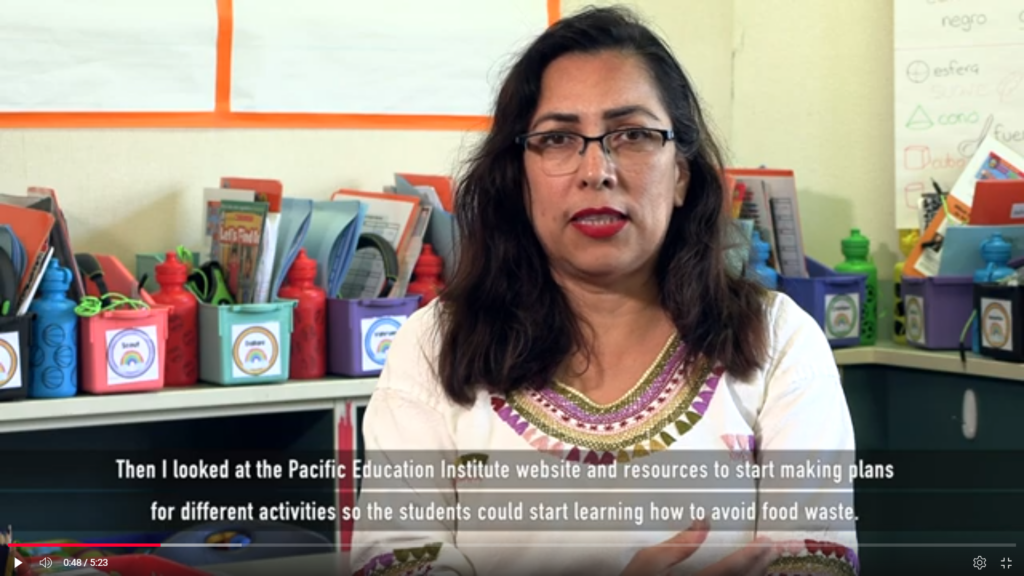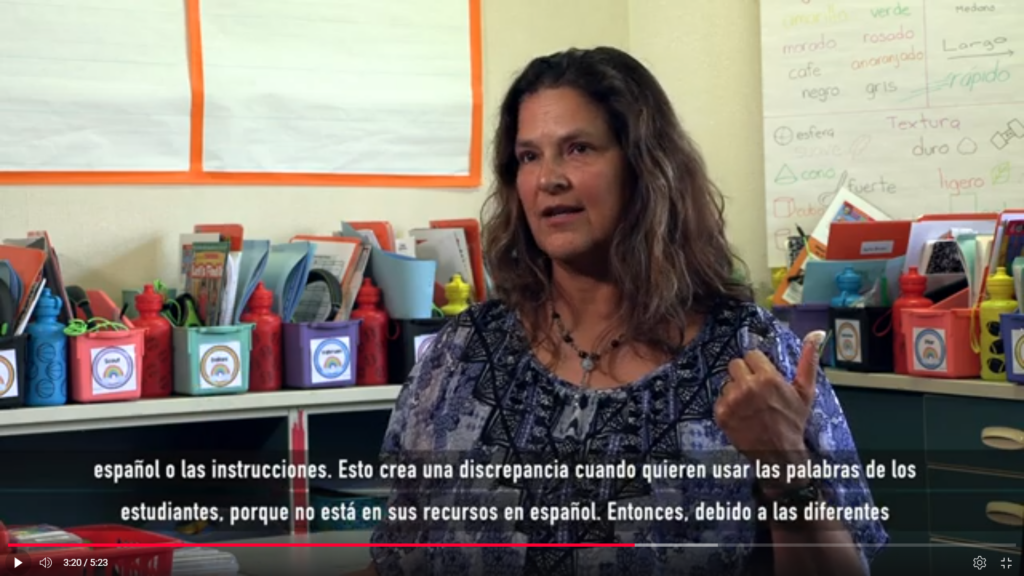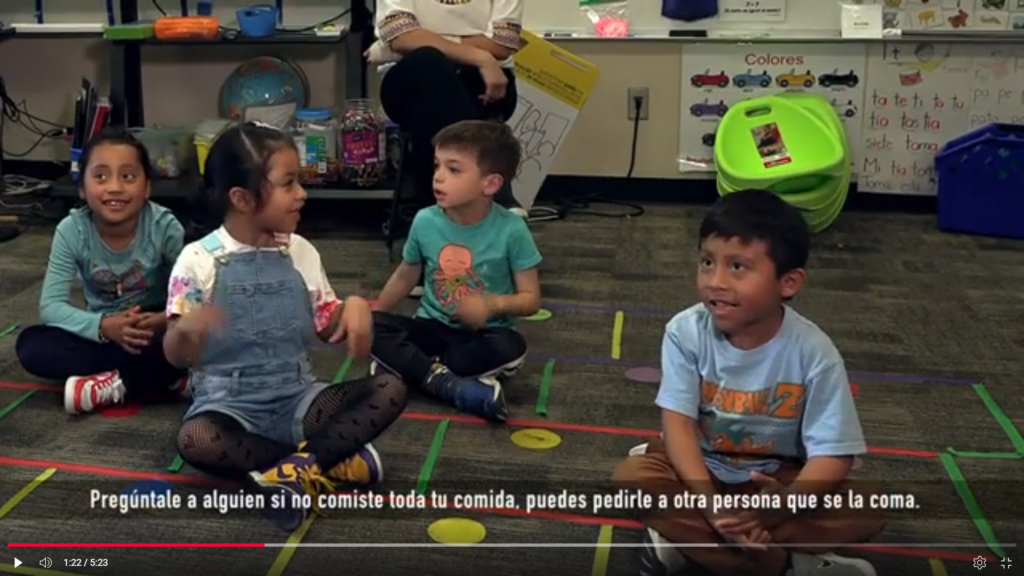Dora Kemp is passionate about the subject of food waste. At Sheridan Elementary School in Tacoma where she teaches a dual language kindergarten class, she observed how much food went into the garbage each day but when Kemp attempted to interest her students in the topic, her message was usually ignored. “I was asking them over and over, ‘Are you going to eat that or throw it away?’” she says.
When Kemp discovered PEI’s Spanish Language Food Waste Solutions Oriented Learning Storyline (SOLS)

and began using it in her class, things started to change. Students began weighing their leftovers at mealtimes and enthusiastically participating in activities designed to demonstrate how food waste contributes to climate change.
“It was an excellent and rich resource to implement with my kids,” she says. “The learning standards were already there so I didn’t have to look for them. The kids keep asking me, ‘When are we going to do another food waste activity?’ It made science fun and it was easy for students to engage. This has inspired me to take more classes with PEI.”
“It was an excellent and rich resource to implement with my kids. The learning standards were already there so I didn’t have to look for them. It made science fun and it was easy for students to engage.”
— Dora Kemp, Sheridan Elementary School Dual Language Kindergarten Teacher
Kemp’s class uses Spanish 70% of the time and English the other 30%. Like many dual language teachers, she has difficulty in finding quality materials for teachers in Spanish, even when student materials exist. It’s a common problem, according to PEI’s Multicultural Program Coordinator Lourdes Flores. “Often, dual language teachers have to use their own time to translate curriculum,” she notes. “We have to look for resources whereas on the English side, the resources are already there. Sometimes teachers will default to teaching in English just because it’s so much easier.”
Flores first encountered PEI while teaching a 5th-grade dual language class in the Shelton School District and has seen firsthand how having materials available in Spanish impacts teachers and students. The district had fully embraced the FieldSTEM model and teachers paired up to facilitate two field experiences every year, with a community partner for each grade.
“It was a fabulous program,” she says. “But we wanted to be able to explain many of these things in Spanish and the materials didn’t exist. We asked the district if we could get things translated and they provided the funding, so that was great. All of the teachers wanted those materials.”

When she joined PEI in 2020, a set of K-3 schoolyard investigations had been translated into Spanish. Since then, Flores has worked with a team to translate four Solutions Oriented Storylines, and in April a new set of translated English Language Arts (ELA) Performance Tasks will be available for educators.
During dual language workshops, enjoy listening and participating in their native language.
Students also benefit when teachers regain the time they would have had to spend on translation. “The immediate result is that you can spend more time directly with the lesson instead of preparing for so long because you need to look for resources,” Flores explains. “You can spend more time assessing students.”
One key message she wants dual language teachers to understand is that using PEI’s resources will not create more work for them but rather supplement what they’re doing with engaging, adaptable resources. As an added benefit, PEI’s materials provide consistent Spanish vocabulary for scientific terms across grade levels. “Teachers from different parts of Central and South America use different words for the same term,” says Flores. “It’s important to be consistent so that whatever word students learn in second grade, they hear the same word again in fourth grade.”
Flores and PEI’s regional coordinators reach out directly to dual language schools around the state and invite dual language administrators to attend FieldSTEM leadership meetings to help them understand how PEI integrates dual language and STEM. Recently she’s seen increased interest from community partners such as Mason Conservation District and Thurston Together that want to expand the access to their programs.
Currently, the Office of the Superintendent of Public Instruction is asking the state legislature for funds to make dual language education accessible to all students statewide by 2040. Flores believes that beginning with elementary school programs and adding grade levels each year will make those efforts sustainable. “I hope to see well-prepared dual language programs all the way through high school,” she says. “Ideally, we will be there from the beginning, starting in elementary.”
Flores is available to work with teachers, schools and school districts and to provide dual language workshops. To learn more, contact her at [email protected]
